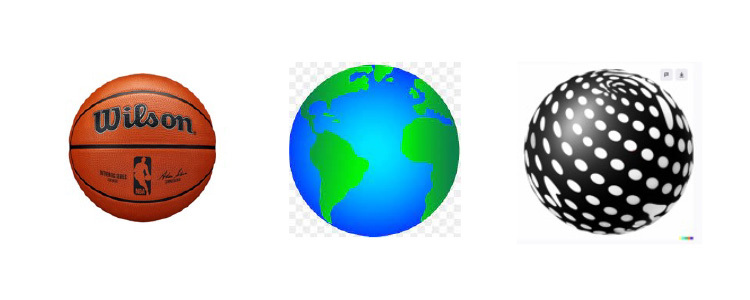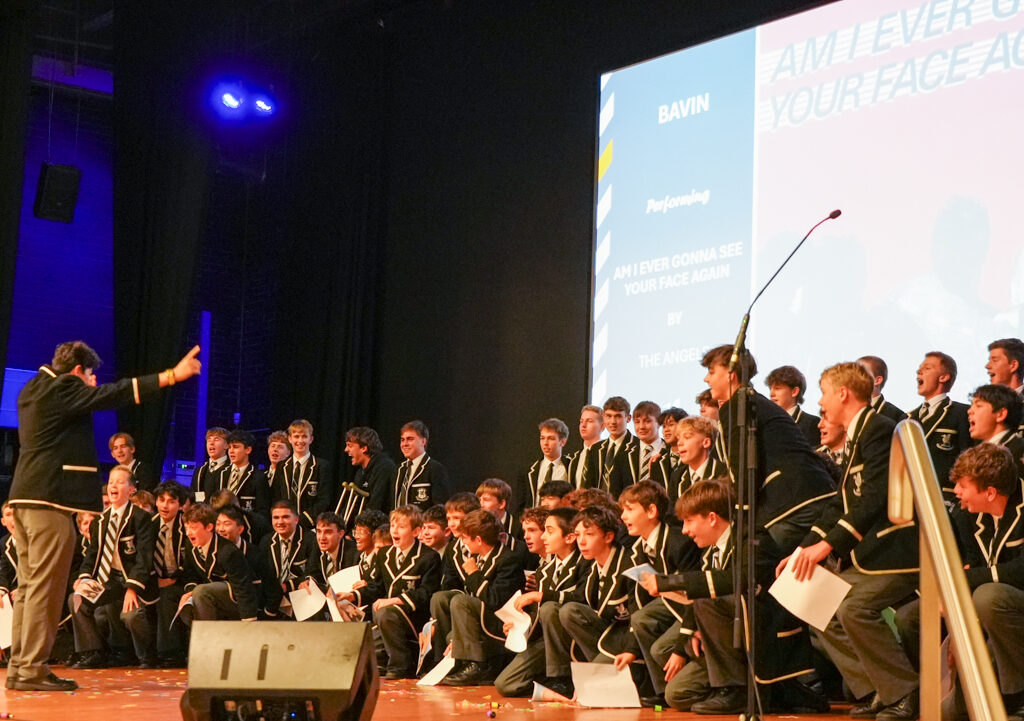Newington is not a place you come to – you are Newington
Over the last five years at assembly, I have tried to compare Newington’s students’ diversity to the surface of a sphere a number of times.
The first time I used a basketball that I was given at my commissioning service in February 2019. The second time I used the surface of the Earth. Last week I used the image of a sphere that I generated using the Dall-E function of Chat GPT 4. Here they are:

I am not so proud of my AI efforts – my attempt to get ‘overlapping circles printed on the surface of a black and white sphere’ seems to have resulted in some globular melting at the poles but no actual overlapping of circles. I am sure that either I (or AI) will improve in the years to come. Nonetheless, the sphere continues to be, I think, a good metaphor for each Newington student to understand the paradox of how they could be at the centre of a school that doesn’t have a centre.
So how does it work? Each student has interests and passions, whether it is fishing or football, art or astronomy. We want each child to feel that their interests and passions are fully shared by Newington as much as possible (within reason). We want that interest to be one of the circles printed on the surface of the sphere. So, if music is their passion, we want to celebrate the dedication of their training, the beauty of the melodies they play and the camaraderie of their ensembles. That’s one of the circles on the sphere. If rugby is their passion, we want to celebrate the skill of their strategic mind as they execute plays, the courage of their heart as they step out onto the field, and the tenacity of their teamwork. That’s one of the circles on the sphere.
And so it goes on, with each of the other circles on the sphere another student’s passion – fencing, Latin, debating, cadets, and so on…
If a student stands in the middle of their circle, they would be correct in thinking that they are at the centre of their Newington. They are in the middle, and can see Newington in all directions around them. But someone else standing in the centre of their Newington somewhere else on the sphere, sees Newington all around them as well. They are in the centre of their Newington too. And even though Newington is the whole surface of the sphere, it does not have a centre. And thus, the paradox of the surface of a sphere having its centre be everywhere and nowhere applies to Newington, so that every student can feel like he is valued and belongs.

Of course, in doing this, we are replacing the unstated two-dimensional circle paradigms of schools in previous years – the one in which some activities made a student the undisputed hero and centre of the school and other activities put some students way out on the suspect margin.
We all know it was a short step from there to exclusion, victimisation and making many people miserable. By taking the metaphor up a dimension from the circle to the sphere, we create a dimensionally more caring and happy school community. (Rest assured, I didn’t say it like this to the students.)
It is worth saying as well that many, indeed most, children have a number of interests and passions, not just one. That’s the way we like it. (It’s why I was trying and failing to get overlapping circles on my sphere for assembly.)
This all requires buy in from the students. It requires them to adopt, at the very least, a ‘live and let live’ attitude to other people’s interests but strongly encourages much more than that.
It encourages an inclusive and open-minded approach in which students show an interest in each other’s interests and passions. If they love AFL, they should ask others about their fishing. If they love cooking, they could ask other student about their chess competitions.
We now have a pastoral structure with only ninety students in each house, to encourage these sort of connections across year groups, as well as within them. I frequently quote, ‘Newington is not a place you come to – you are Newington. So, when you are kind, Newington is kind and when you are mean Newington is mean’. This is true too with inclusivity of interests and characters.
All of this will help make a culture that is diverse, vibrant and kind. And it will continue to make Newington the sort of place that they are proud and happy to come to, because it respects them and what they care about.
And if this becomes completely ingrained in the school, I won’t need to make a fourth attempt at finding a sphere metaphor that sums it all up.
Mr Michael Parker
Headmaster



